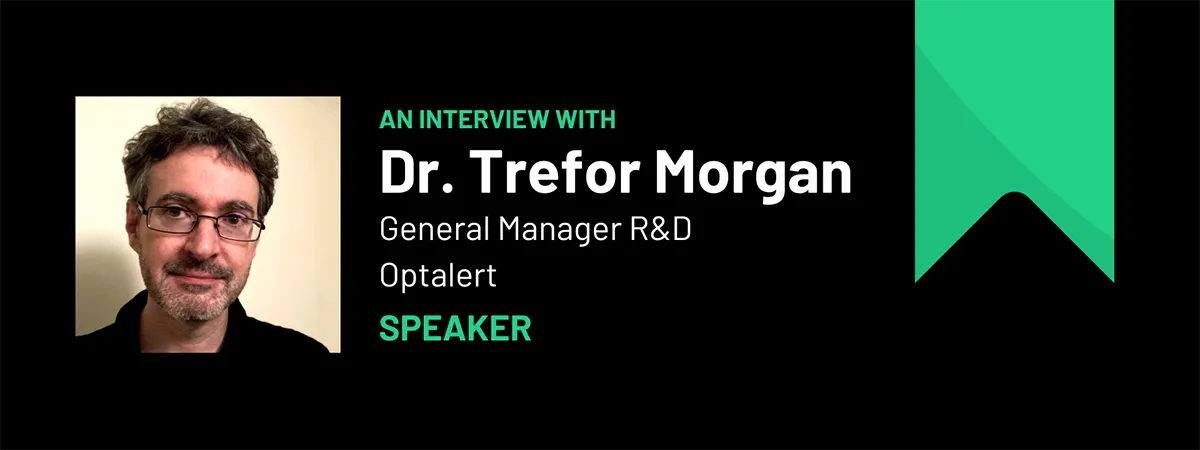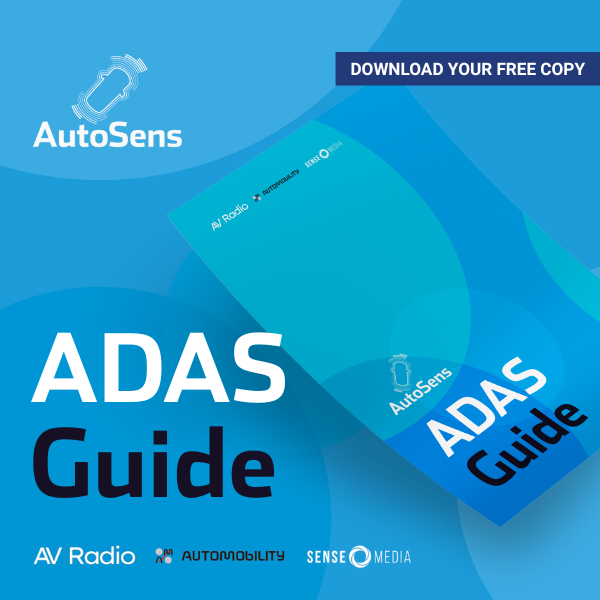Dr. Trefor Morgan heads up the R&D team at Optalert, a company specialising in blepharometry (eyelid movements) and drowsiness detection. We caught up with him for the latest on how this technology is developing.
Trefor aims to raise awareness and educate others on automotive drowsiness as well as the importance of having an accurate drowsiness detection system in vehicles. He is currently working on the next frontier in blepharometry by finding biomarkers that link eyelid movement characteristics to neurological disorders. Don’t miss his presentation at InCabin Phoenix (15-17 March 2023) ‘Vision based AI for drowsiness detection – a high risk approach to a solved problem‘.
1. Your presentation will be a market analysis – what challenges and opportunities do you see for the industry?
Vision-based AI has achieved great success in many areas. So, it may seem appropriate for automotive suppliers to use this technology to detect driver drowsiness. But this approach can be risky, and automotive suppliers need to be aware of several pitfalls. These are mainly related to misconceptions or incorrect assumptions about the nature of drowsiness, like the perception that tiredness is a substitute for impairment due to drowsiness, or that facial expressions not specific to drowsiness can be used to detect impairment. Not accounting for the broad temporal dynamic of drowsiness is another pitfall. Data collection for training such models is another risky challenges; the data must reflect high levels of quantity, quality and diversity. Given these pitfalls and challenges, the automotive suppliers of drowsiness detection pursuing vision-based AI approaches are taking a high-risk path, which can lead to a model that cannot cover many corner cases.
Optalert navigated this journey years ago and have developed a solution. At InCabin we will discuss this solution: a physiological biomarker for drowsiness based on a robust ML algorithm ready to be easily integrated into DMS and DDAW systems. We will then extend this to discuss other neurological conditions that may be determined from measuring eyelid movements, such as epilepsy, Alzheimer’s and neurotoxicity,
2. The user experience is an important aspect of in-cabin technology, manufacturers looking to supply the fully immersive experience for car users. How do you think this will change the market for suppliers and users?
The ADAS and Cockpit domains are blending, traditional cockpit / infotainment suppliers must also have ASIL / functional safety expertise to comply with OEM requirements to compete in the market. A positive user experience is essential for the growth and consumer acceptance or new ADAS and AD technologies. Suppliers must understand and incorporate an appropriate user experience for an easy, pleasurable use of their vehicle.
In drowsiness, in-cabin technologies will need to evolve beyond the current low requirements to become robust and provide reliable warnings of driver impairment. This will require regulators, certifiers, manufacturers and suppliers to work towards a common goal. Once reliable drowsiness measurements are adopted by the industry, a range of new possibilities open – drowsiness hotspots, smart interventions and the industry can start looking at further applications.
It will be particularly challenging for manufacturers to balance safety, with cost and the lure of infotainment features being placed ahead of safety features. There is an opportunity in making Vision Zero come true by preventing drowsiness related road crashes.
3. What are you most looking forward to at InCabin Phoenix?
I am most looking forward to meeting old friends and making new ones at an in-person event while learning about new technologies, solutions and theories as the automotive industry continues to move from ADAS to automated vehicles. We are looking forward to meeting all members of the automotive community and raising awareness about driver impairment due to drowsiness. We are seeking collaborations and partnerships where we can offer our expertise on driver drowsiness detection gained from 15 years of successful in-field experience with commercial fleets.



